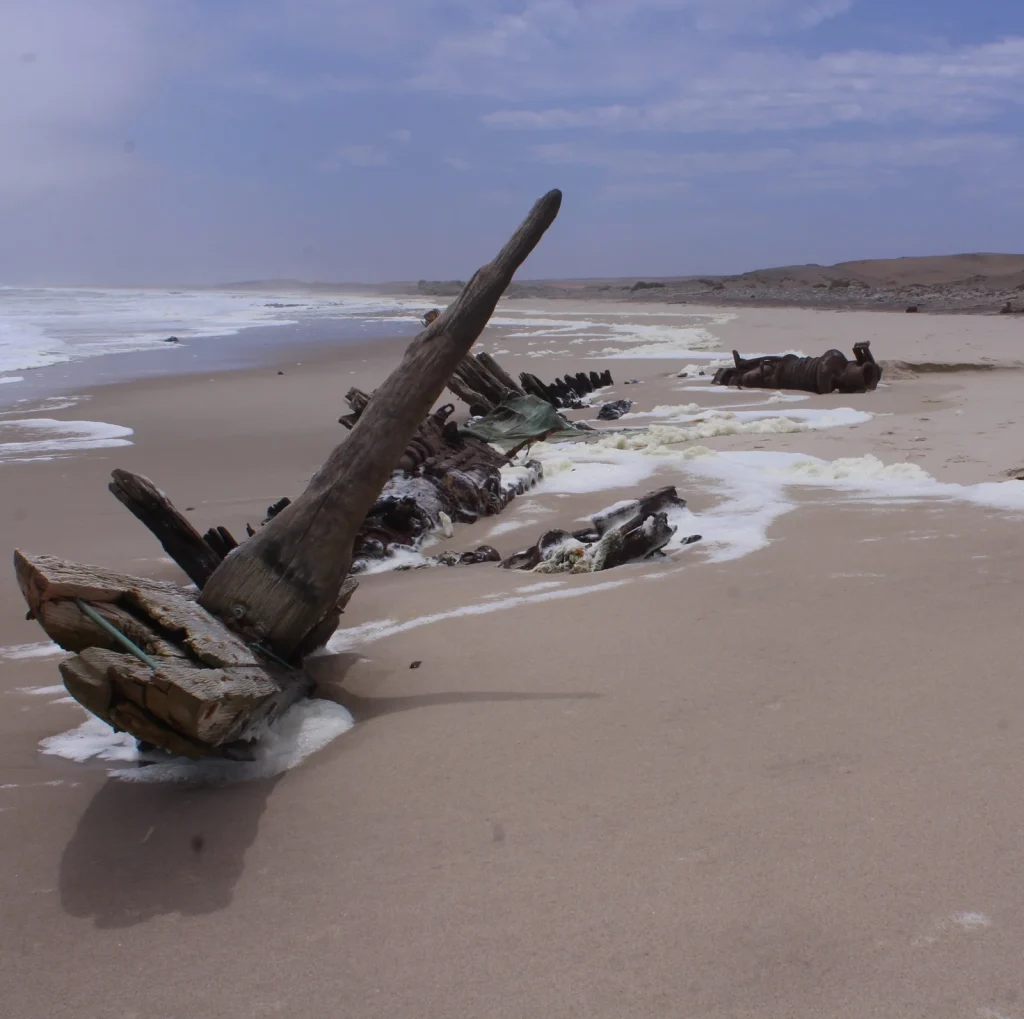The Skeleton Coast, located along the northern Atlantic coastline of Namibia, is a region steeped in both natural beauty and historical intrigue. Stretching from the Kunene River to the Swakop River, this remote and desolate landscape has earned its name from the remnants of shipwrecks that dot its shores.
The Secrets of the Skeleton Coast
The Skeleton Coast derives its name from the skeletal remains of ships that have met their fate along its treacherous shores. Historically referred to as “The Land God Made in Anger” by the indigenous San people and “The Gates of Hell” by Portuguese sailors, this region is characterised by dense ocean fogs, relentless winds, and a highly inhospitable climate. Despite its harsh conditions, the Skeleton Coast boasts a rugged beauty that has captured the imagination of adventurers and explorers for centuries.
A Treasure Trove of Shipwrecks
The Skeleton Coast is renowned for its countless shipwrecks, which serve as haunting reminders of the perils faced by sailors navigating these treacherous waters. From the Eduard Bohlen to the Dunedin Star, the coast is littered with the skeletal remains of vessels of various sizes. The area’s name was popularized by John Henry Marsh in his book chronicling the shipwreck of the Dunedin Star, and it has since become synonymous with the region itself.
Exploring the Wildlife of the Skeleton Coast
Despite its harsh environment, the Skeleton Coast is home to a diverse array of wildlife. Namibia has declared much of the area the Skeleton Coast National Park, encompassing vast stretches of coastline and inland riverbeds. From the large seal colony at Cape Fria to the clay castles of the Hoarusib River, the park is teeming with life, including baboons, giraffes, lions, and black rhinoceroses. The region’s unique ecosystem has been the subject of numerous wildlife documentaries, showcasing the adaptations of its inhabitants to extreme aridity.

Preserving the Skeleton Coast
Efforts are underway to conserve the fragile ecosystem of the Skeleton Coast and ensure its protection for future generations. The national park and designated wilderness areas aim to safeguard the region’s biodiversity and natural beauty while also providing opportunities for sustainable tourism. Responsible travel practices are essential for minimising human impact and preserving the delicate balance of this remarkable environment.
Embarking on Your Skeleton Coast Adventure
For travellers seeking adventure off the beaten path, the Skeleton Coast offers a once-in-a-lifetime experience. Whether exploring the remnants of ancient shipwrecks, observing wildlife in their natural habitat, or simply soaking in the awe-inspiring beauty of this remote wilderness, a journey to the Skeleton Coast promises an unforgettable adventure.
The Skeleton Coast is a testament to the raw power of nature and the enduring spirit of exploration. From its rugged shores to its thriving wildlife, this remote wilderness captivates the imagination and inspires awe. As we celebrate the natural wonders of our planet, let us also commit to preserving and protecting places like the Skeleton Coast for future generations to enjoy.


